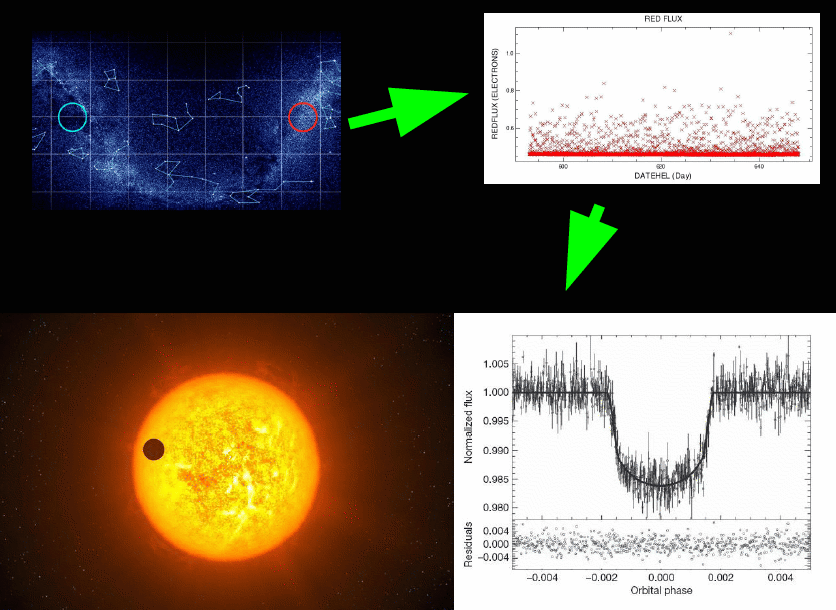Hunting for Planets with CoRoT
Based on materials originally developed by Stephen Kane (NStED/IPAC) for the 2010 Sagan Exoplanet Workshop. This group project was entitled "Hunting for Planets with CoRoT."
Introduction
Here, in a nutshell, is the idea:
 Top left: CoRoT images things within one of two circles, shown here in red and cyan, on a map of the sky. Top right: You get light curves out. Bottom right: You can find transits, some of which will be planets (bottom left).
Top left: CoRoT images things within one of two circles, shown here in red and cyan, on a map of the sky. Top right: You get light curves out. Bottom right: You can find transits, some of which will be planets (bottom left).
The Challenge
The transit method generally involves gathering LARGE datasets of RAW photometry. Are there signatures of one or more exoplanets in these data? Yes! But we need to know how to locate them. There are many noise sources which can disguise transit signatures. How do we filter these? There are astrophysical sources of noise also that can mimic the signature of an exoplanet (blended eclipsing binaries). We will simulate the end-to-end process using a subset of CoRoT data.
The Method
The NASA Star and Exoplanet Database (NStED) serves raw data from the CoRoT mission. You will become familiar with the CoRoT data products and the noise properties. Investigate the light curves using various techniques, including the NStED periodogram service which includes a Box-fitting Least Squares algorithm. You will identify periodic signatures within the light curves and determine their nature. In particular, some of the light curves contain the signature of a transiting exoplanet. You will locate these and characterize them (Seager & Mallen-Ornelas, 2003, ApJ, 585, 1038).
The Goals
- How to extract survey data from on-line archives.
- How to sift light curves for periodic signatures.
- What is the expected false-alarm rate vs the observed false-alarm rate?
- What kind of features manifest as false-alarms?
- How many transits are expected from a given survey? How many did we
actually detect?
- What can we learn from transit light curves about the characteristics
of the planet?